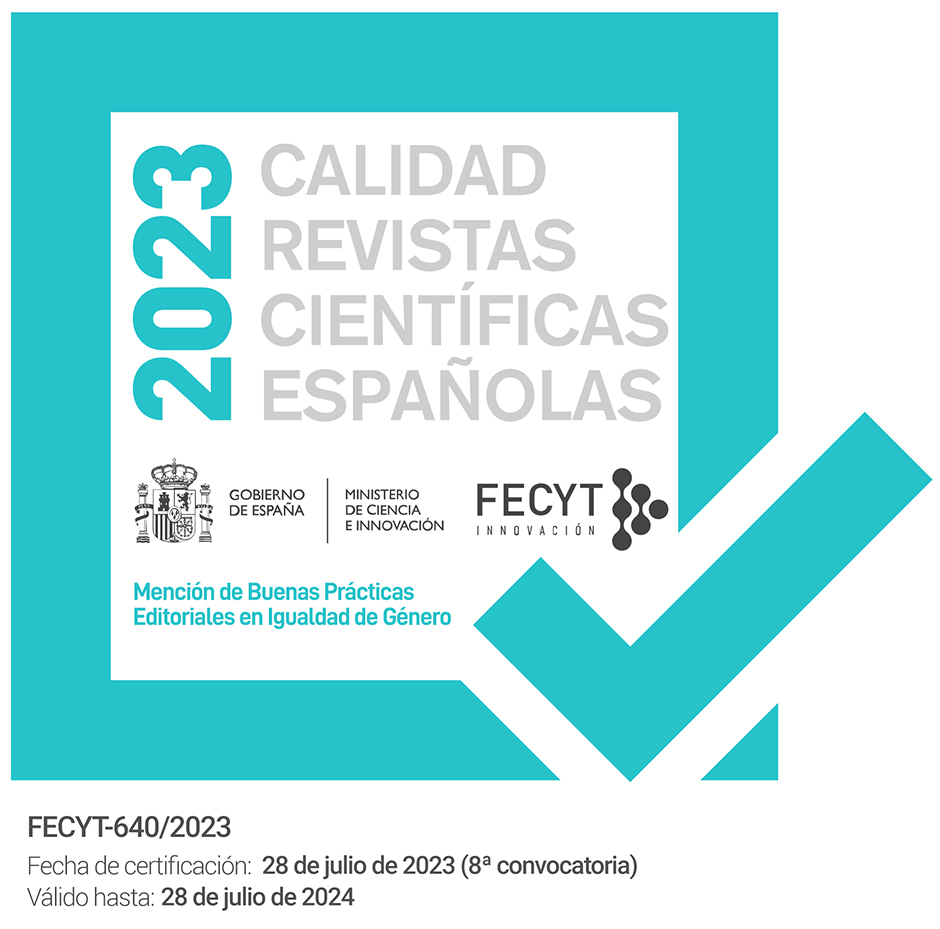Pharmaceutical intervention in the usage of inhalers with COPD patients that have an appointment in a health center to do an spirometry
DOI:
https://doi.org/10.60103/phc.v25i2.804Keywords:
COPD; adherence; inhalers; pharmacist; Pharmaceutical CareAbstract
Background: the usage of inhalers is something complex. This work with COPD patients pretends that, after the pharmacist intervention, the correct usage of these drugs is guaranteed so as to improve the quality of life.
Methods: the nurse set a date to do an spirometry to the patients. On the other hand, the pharmacist assessed the usage of the inhalers and carried out the adherence and quality of life tests. Three months after, the patients came back to the consultation and the pharmacist repeated the same procedure to detect any possible change after the intervention.
Results: on those patients that attended both appointments, it was seen that there were statistically significant changes between the adherence punctuation regarding both appointments. The average of punctuation is higher in the second appointment (49.09) in respect to the first one (46.45), this is a significant difference with a p<0.05. The quality of life was the same in both appointments and the errors average in the usage of inhalators in the second appointment decreased (1773) significantly in respect to the errors average in the first appointment (4727).
Conclusion: the intervention of a pharmacist in a multidisciplinary team to the following of COPD patients is advantageous to these patients, mainly in relation to the usage of inhalers and the adherence to treatment.
Downloads
References
World Health Organization. The top 10 causes of death [Internet]. 2020 [cited 2021 Jun 16]. Disponible en: https://www.who.int/news-room/fact-sheets/detail/the-top-10-causes-of-death
Sobradillo V, et al. Estudio IBERPOC en España: prevalencia de síntomas respiratorios habituales y de limitación crónica al flujo aéreo. Arch. Bronconeumol. 1999; 35(4):159–166, 1999. DOI: 10.1016/S0300-2896(15)30272-6
Miravitlles M, et al. Actualización 2021 de la Guía Española de la EPOC (GesEPOC). Tratamiento farmacológico de la EPOC estable. Arch. Bronconeumol. 2022; 58(1):69–81. DOI: 10.1016/j.arbres.2021.03.005
M. D. E. Sanidad and S. S. E. Igualdad, “Plan de calidad para el Sistema Nacional de Salud 2010,” Plan Calid. para el Sist. Nac. Salud, 2010. Completar referencia (fecha de acceso y disponible en)
Miravitlles M, et al. Prevalence of COPD in Spain: Impact of undiagnosed COPD on quality of life and daily life activities. Thorax. 2009; 64(10):863–868, 2009. DOI: 10.1136/thx.2009.115725
Global Initiative for Chronic Obstructive Lung Disease. 2021 Global Strategy for Prevention. Diagnosis and Management of COPD. GOLD; 2021. Disponible en: www.goldcopd.org
Bozek A, Jarzab J. Adherence to asthma therapy in elderly patients. J. Asthma. 2010; 47():162–165. , 2010.
Tommelein E, et al. Effectiveness of pharmaceutical care for patients with chronic obstructive pulmonary disease (PHARMACOP): A randomized controlled trial. Br. J. Clin. Pharmacol. 2014; 77(5):756–766. https://doi.org/10.1111/bcp.12242
Vogelmeier C, López V, Frith P, et al. Global Strategy for the Diagnosis, Management, and Prevention of Chronic Obstructive Lung Disease (2018 Report). Global Initiative for Chronic Obstructive Lung Disease GOLD 2018. Disponible en: www.goldcopd.org
Plaza V, López-Viña A, Cosio BG. El test de adhesión a los inhaladores. Arch Bronconeumol. 2017; 53(7):360-1. DOI: 10.1016/j.arbres.2016.08.006
Jimenez-Ruiz CA, Pascual Lledó JF, Cícero Guerrero A, Cristóbal Fernández M, et al. Análisis de la calidad de vida en pacientes con enfermedad pulmonar obstructiva crónica (EPOC) que dejan de fumar. Med. Fam. Semer. 2018; 44(5):310–315. https://doi.org/10.1016/j.semerg.2017.08.003
Palo Serrano J. Uso de inhaladores: detección de errores e intervención por el farmacéutico comunitario. Farmacéuticos Comunitarios. 2016; 8(4):18-25. doi: 10.5672/FC.2173-9218.(2016/Vol8).004.03
Gorgas Torner MQ, et al. Programa de atención farmacéutica integrada en pacientes con enfermedades crónicas. Farm. Hosp. 2012; 36(4):229–239. , 2012. https://doi.org/10.1016/j.farma.2011.06.015
Davis E, Marra C, Gamble JM, Farrell J, Lockyer J, FitzGerald JM, et al. Effectiveness of a pharmacist-driven intervention in COPD (EPIC): Study protocol for a randomized controlled trial. Trials [Internet]. 2016;17(1):1–8. Disponible en: http://dx.doi.org/10.1186/s13063-016-1623-7
F. Carrión Valero, S. Paulos Dos Santos, and B. R. Celli. Tabaquismo en pacientes con EPOC, ¿un nuevo fenotipo clínico?. Arch. Bronconeumol. 2018; 54(5):249–250. DOI: 10.1016/j.arbres.2017.10.021
Downloads
Published
How to Cite
Issue
Section
License
Copyright (c) 2023 Cristina Peral Bolaños, Luis Baró Rodriguez, Rosa Carabaño Moral, Maria Victoria Martin Ruiz, Esperanza Sanz Sanmartin, Esther Ordoñez Navarro, Isabel Maria Molina Conejo, Aranzazu Garcia Buendia, Maria Dolores Llamas Del Castillo, Fernando Martinez Martinez, Rocio Martin Valero

This work is licensed under a Creative Commons Attribution-NonCommercial-ShareAlike 4.0 International License.
La revista Pharmaceutical Care España se publica bajo una licencia «Creative Commons, Reconocimiento, No Comercial y Compartir Igual 4.0 Internacional» (CC BY-NC-SA 4.0)», que permite a otros compartir el trabajo con un reconocimiento de la autoría del trabajo y la publicación inicial en esta revista (con excepción de los usos comerciales).
Los autores que publican en esta revista están de acuerdo con los siguientes términos:a) Los autores conservan los derechos de autor (derechos morales) y garantizan a la revista el derecho de ser el primer soporte documental publicado del trabajo.
b) Se permite y anima a los autores a difundir la versión del trabajo revisado por pares y aceptada para su publicación (por ejemplo, en repositorios institucionales o temáticos), recomendando hacerlo con la versión final del editor “pdf”, “html” o “xml”).









